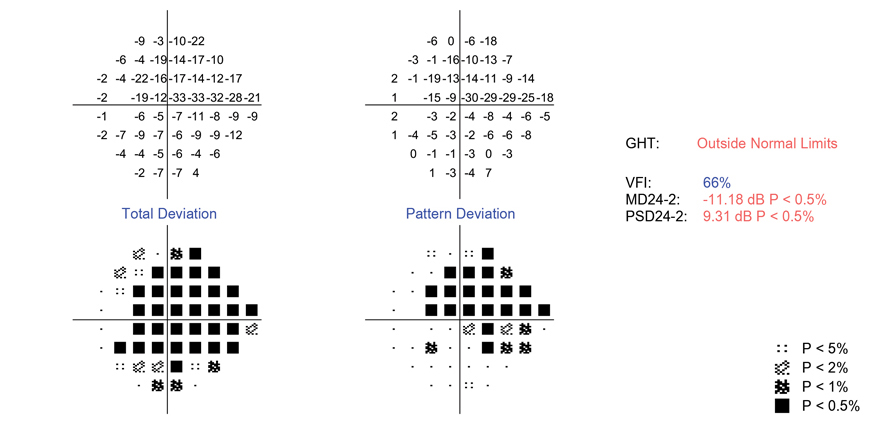 |
Ethnicity may play a role in incidence and timing of vision loss among patients with POAG. Photo: Danica Marrelli, OD. Click image to enlarge. |
With the help of artificial intelligence modeling, researchers were able to identify 14 archetypes of regional visual field loss patterns in patients of different ethnicities with primary open-angle glaucoma (POAG). They found that Black patients had a higher POAG risk with early central and advanced visual field loss.
In the prospective study, the researchers followed 209,036 patients from a trio of nursing and health professional studies from the 1980s to 2019. Patients were ≥40 years of age and free of glaucoma. The researchers confirmed incident POAG with reproducible visual field loss in 1,946 patients using medical records. They obtained total deviation information from the earliest reliable glaucomatous visual field for each affected eye (n=2,564) and applied machine learning analysis to identify optimal solutions or “archetypes” for regional visual field loss patterns.
Fourteen archetypes were identified, representing four advanced loss patterns, nine early loss patterns and one with no visual field loss. The researchers reported in their paper that, “Compared with non-Hispanic white patients, Black participants had a higher risk of early visual field loss archetypes and even higher risk for advanced loss archetypes.” They observed no differences for Asians and Hispanic white patients; however, Hispanic white patients had a significantly higher risk of POAG with paracentral defects and advanced superior loss. They found that Black patients had a significantly higher risk for all advanced-loss archetypes and for three early-loss patterns, including paracentral defects.
“Archetype analyses were able to identify and quantify major specific regional patterns of visual field loss,” the article explained. “The subtyping of glaucoma using machine learning-based approaches and identifying unique risk factors may help researchers fine-tune and improve the discovery of POAG risk factors.”
Kang JH, Wang M, Frueh L, et al. Cohort study of race/ethnicity and incident primary open-angle glaucoma characterized by autonomously determined visual field loss patterns. Transl Vis Sci Technol. 2022;11(7):21. |


